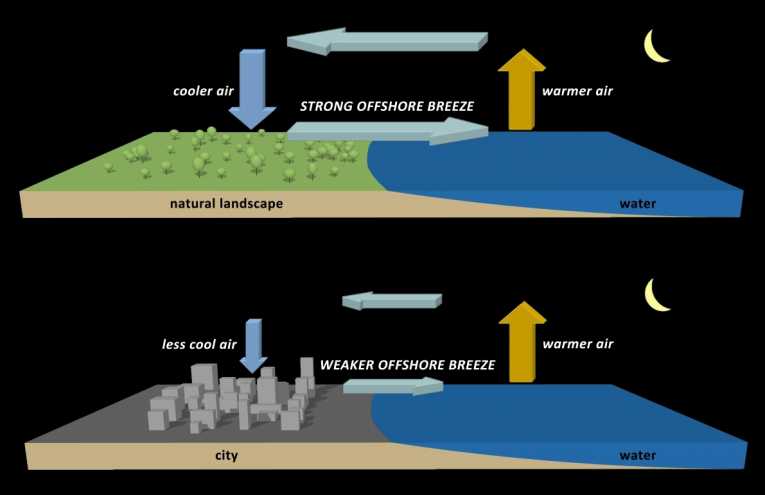Researchers emphasize the importance of urban planning as they observe how cities inhibit natural air cleansing processes. Two recent studies explored wind patterns in highly polluted cities - Houston, and Ouagadougou, a west African city by the Sahara Desert - to learn how stagnant air affects pollution levels, particularly in warmer weather.
Amongst U.S. cities, Houston has some of the highest levels of pollutants like ozone at the ground level. In Houston, urban development inhibits winds from sweeping pollutants out to the ocean at night, the National Center for Atmospheric Research (NCAR) found. Buildings aren't the only factor, or even the primary one. In fact, it's heat from the pavement that changes wind patterns, making pollution build up in stagnant air. These findings have implications for other midlatitude coastal cities in the U.S. and abroad, say the researchers.
At night, winds are slower than they would be if no cityscape were present, a computer simulation showed. Land in the city remains warmer at night, and in the summer, this causes similarity in land and sea temperatures that in turn slows night winds. Buildings play a large role in slowing air flow in the afternoon.
In some cities, stagnant air especially affects the poor. In Ouagadougou, by the Sahara Desert in west Africa, high dust levels and emissions get trapped in stable layers, say researchers at the University of Gothenburg, Sweden.
This particularly happens in the evening, with pollutants lingering in the air rather than being blown away by winds. In poorer areas this phenomenon has a stronger effect, largely because of dusty, unpaved roads. Older vehicles and cooking over open fires also puts people in poorer areas at risk, with respiratory problems leading to 20 percent of deaths.
"The phenomenon is rather normal among very poor cities around the world," says a press release for the study. Thus, as urban populations rise, planning becomes increasingly more important.
Growth of the city landscape could slow winds and raise pollution even more, making air circulation a primary concern in the design of cities, says the NCAR study's lead author Fei Chen.
Researchers for both studies believe greener areas can improve air quality in these cities. Vegetated areas in Ouagadougou have cooler temperatures at night, suggesting greener areas could play a large role in improving air quality in cities, researchers say. "If you made the city greener and created lakes and ponds, then you probably would have less air pollution even if emissions stayed the same," Chen says of Houston. These landscapes would cool the city and boost air circulation to disperse pollutants.
The NCAR study will be published in the June issue of the Journal of Geophysical Research-Atmospherics.
(Top Image Caption: Paved surfaces in the Houston area keep the city warmer than more natural surfaces. As a result, overnight temperatures are often similar between the city and nearby offshore areas, which weakens summertime breezes and enables air pollution to build up. The stagnant conditions also persist during the day because of larger-scale wind patterns.
Top Image Credit: © UCAR, (Illustration by Lex Ivy)










